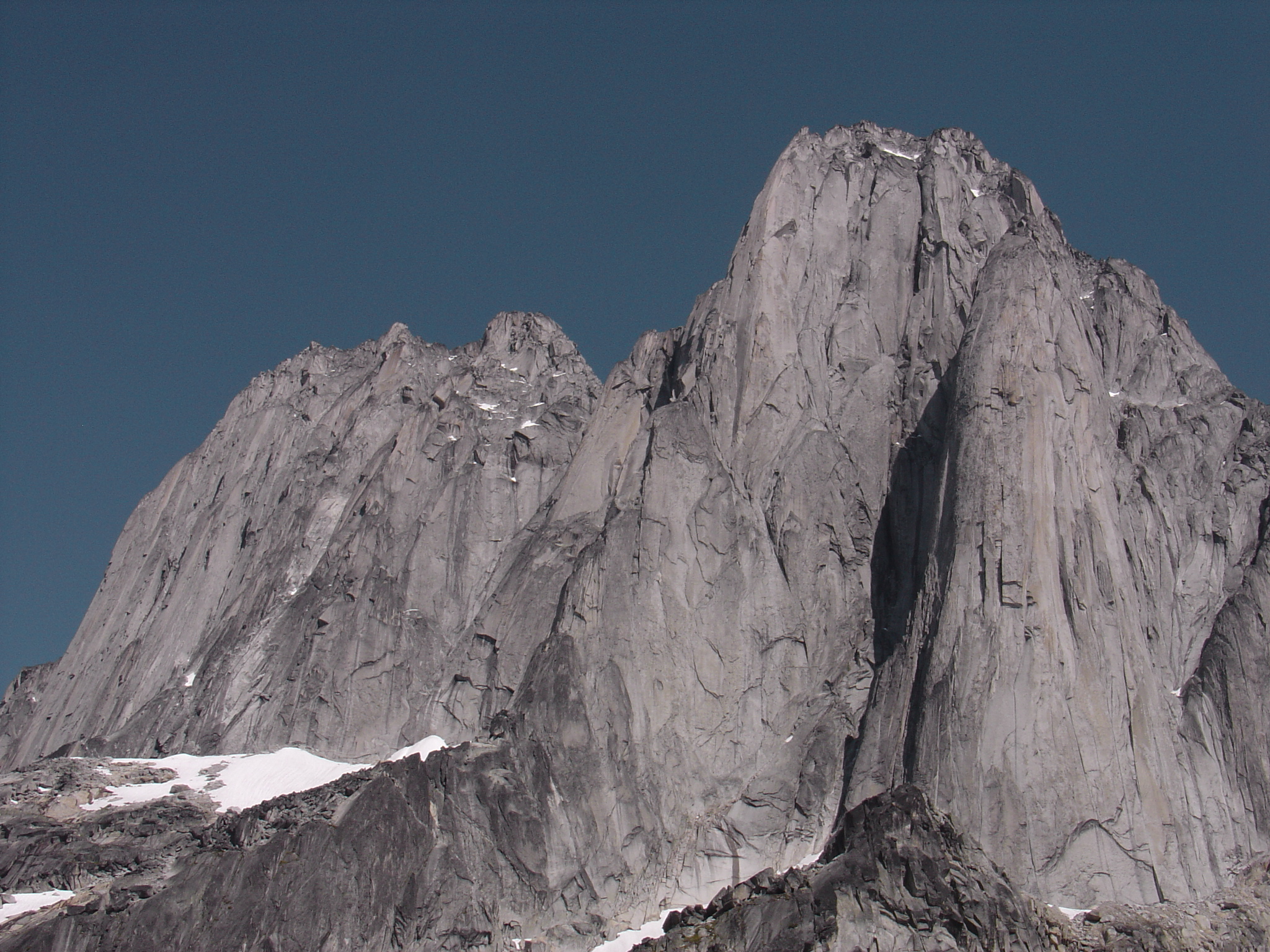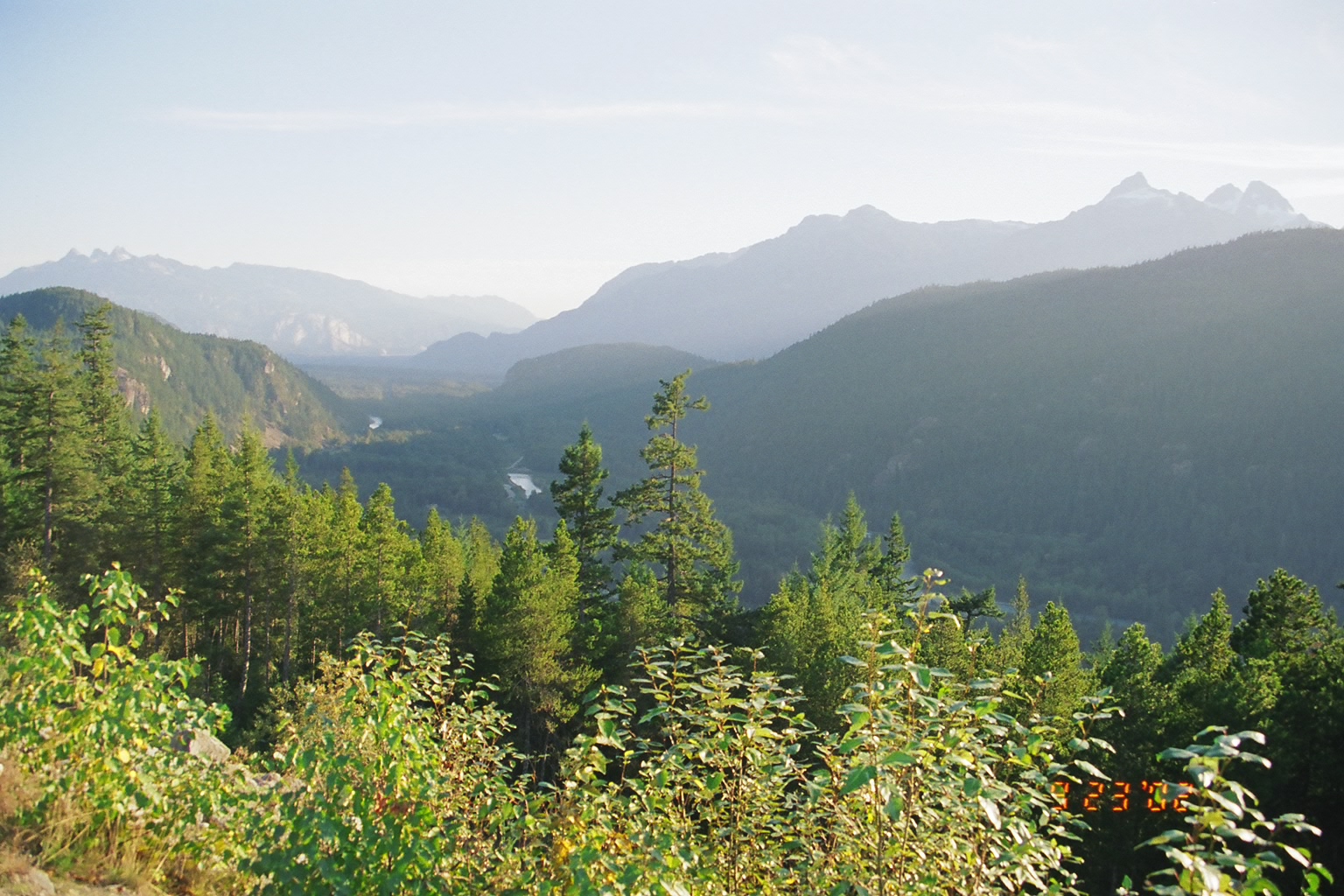|
Howser Peak
Howser Peak is a summit in The Bugaboos of British Columbia, Canada. It is located south of the Bugaboo Glacier and is the southernmost point of Bugaboo Provincial Park. Precipitation runoff from Howser Peak drains north into Bugaboo Creek which is a tributary of the Columbia River; as well as south to Duncan River via Howser Creek. Howser Peak is more notable for its steep rise above local terrain than for its absolute elevation as topographic relief is significant with the south aspect rising 1,380 meters (4,527 ft) in . History The mountain's toponym was published in "''A Climber's Guide to the Interior Ranges of British Columbia''" by J.M. Thorington in 1947, and it was officially adopted on October 29, 1962, by the Geographical Names Board of Canada. The peak is named in association with Howser Creek which in turn is named after prospector Fred Hauser who found placer gold there in the late 1800s. The first ascent of the peak was made on August 28, 1916, by Conr ... [...More Info...] [...Related Items...] OR: [Wikipedia] [Google] [Baidu] |
Howser Spire
Howser Spire, or Howser Spire Massif, is a group of three distinct granite peaks, and the highest mountain of the Canadian Bugaboo Spires. The mountain is located at the southwest corner of the Vowell Glacier, within the Bugaboo mountain range in the Purcell Mountains, a subrange of British Columbia's Columbia Mountains, The highest of the three spires is the North Tower at , the Central Tower the lowest, and the South Tower is slightly lower than the North at . Howser Spire is named after the town of Howser on Duncan Lake and Howser Creek. The first ascent of the North Tower was made in August 1916 by Conrad Kain, Albert MacCarthy, E. MacCarthy, J. Vincent and Henry . The Beckey-Chouinard/West Buttress route is recognized in the historic climbing text ''Fifty Classic Climbs of North America'' and considered a classic around the world. Nearby * Brenta Spire * Bugaboo Spire (3204 m) * Conrad Kain hut * Crescent Towers * Hound's Tooth * Marmolata Spire * Pigeon Spire (315 ... [...More Info...] [...Related Items...] OR: [Wikipedia] [Google] [Baidu] |
Topographic Relief
Terrain or relief (also topographical relief) involves the vertical and horizontal dimensions of land surface. The term bathymetry is used to describe underwater relief, while hypsometry studies terrain relative to sea level. The Latin word (the root of ''terrain'') means "earth." In physical geography, terrain is the lay of the land. This is usually expressed in terms of the elevation, slope, and orientation of terrain features. Terrain affects surface water flow and distribution. Over a large area, it can affect weather and climate patterns. Importance The understanding of terrain is critical for many reasons: * The terrain of a region largely determines its suitability for human settlement: flatter alluvial plains tend to have better farming soils than steeper, rockier uplands. * In terms of environmental quality, agriculture, hydrology and other interdisciplinary sciences; understanding the terrain of an area assists the understanding of watershed boundaries, ... [...More Info...] [...Related Items...] OR: [Wikipedia] [Google] [Baidu] |
Columbia Valley
The Columbia Valley is the name used for a region in the Rocky Mountain Trench near the headwaters of the Columbia River between the town of Golden and the Canal Flats. The main hub of the valley is the town of Invermere. Other towns include Radium Hot Springs, Windermere and Fairmont Hot Springs. The Panorama Ski Resort is located near the valley. The Columbia Valley is home to the Columbia Wetlands, a vital link on a major bird migration route. External links Columbia Headwaters Legacy ProgramColumbia Valley, BC��Business Directory, Local Online Newspaper, Live Webcams Valleys of British Columbia {{BritishColumbiaInterior-geo-stub ... [...More Info...] [...Related Items...] OR: [Wikipedia] [Google] [Baidu] |
Flattop Peak
Flattop Peak is a summit in British Columbia, Canada. Description Flattop is located in The Bugaboos, west of the Bugaboo Glacier along the southern boundary of Bugaboo Provincial Park. Precipitation runoff from Flattop Peak drains east into Bugaboo Creek which is a tributary of the Columbia River; as well as west to Duncan River via East Creek. Flattop Peak is more notable for its steep rise above local terrain than for its absolute elevation as topographic relief is significant with the summit rising 1,660 meters (5,446 ft) above East Creek in . The nearest higher neighbor is line parent Howser Peak, to the southeast. History The peak's descriptive name was applied by Eaton Cromwell, who made the first ascent of the summit with Peter Kaufmann on August 10, 1930. The mountain's toponym was officially adopted on June 9, 1960, by the Geographical Names Board of Canada. Climate Based on the Köppen climate classification, Flattop Peak is located in a subarctic ... [...More Info...] [...Related Items...] OR: [Wikipedia] [Google] [Baidu] |
The Four Squatters
The Four Squatters is a mountain in British Columbia, Canada. Description The Four Squatters is located in the Purcell Mountains, southwest of Bugaboo Provincial Park, and southeast of the confluence of East Creek and Duncan River. Precipitation runoff from The Four Squatters drains into East and Howser creeks, which are both tributaries of the Duncan River. The Four Squatters is more notable for its steep rise above local terrain than for its absolute elevation as topographic relief is significant with the summit rising nearly 2,500 meters (8,200 ft) above Duncan Lake in . The nearest higher neighbor is line parent Howser Peak, to the northeast. History The landform's name was applied in 1910 by Canadian surveyor Arthur Oliver Wheeler,Glen W. Boles, William Lowell Putnam, Roger W. Laurilla (2006), ''Canadian Mountain Place Names: The Rockies and Columbia Mountains'', Rocky Mountain Books, , p. 101. and the mountain's toponym was officially adopted on June 9, 1960, ... [...More Info...] [...Related Items...] OR: [Wikipedia] [Google] [Baidu] |
Anniversary Peak
Anniversary Peak is a summit in The Bugaboos of British Columbia, Canada. It is located southeast of the Bugaboo Glacier, on the southern boundary of Bugaboo Provincial Park. Precipitation runoff from Anniversary Peak drains into Bugaboo Creek which is a tributary of the Columbia River. Anniversary Peak is more notable for its steep rise above local terrain than for its absolute elevation as topographic relief is significant with the summit rising 1,350 meters (4,429 ft) above Bugaboo Creek in . History Anniversary Peak was climbed by 43 persons of the Alpine Club of Canada in five parties in July 1946. The club so-named the peak because it was the 40th anniversary of the club's inception.William Lowell Putnam, Glen W. Boles, Roger W. Laurilla (1990), ''Place names of the Canadian Alps'', Publisher:Footprint, , p. 10 The mountain's toponym was published in "''A Climber's Guide to the Interior Ranges of British Columbia''" by J.M. Thorington in 1947, and it was offici ... [...More Info...] [...Related Items...] OR: [Wikipedia] [Google] [Baidu] |
Hound's Tooth (mountain)
Hound's Tooth is a peak in the Purcell Mountains of the Columbia Mountains in southeastern British Columbia, Canada. Hound's Tooth is a rock pinnacle at the end of Marmolata Mountain's northeast ridge. Both mountains are Nunataks, sticking up from the middle of the Bugaboo Glacier. The Hounds' Tooth is composed of a coarse, fractured granite. Routes * References Two-thousanders of British Columbia Columbia Valley Purcell Mountains {{BritishColumbiaInterior-geo-stub ... [...More Info...] [...Related Items...] OR: [Wikipedia] [Google] [Baidu] |
Marmolata Mountain
Marmolata Mountain is a nunatak in the Purcell Mountains of the Columbia Mountains in southeastern British Columbia, Canada. It was named in 1930 by Eaton Cromwell because he thought it looked similar to the highest of the Italian Dolomites The Dolomites ( it, Dolomiti ; Ladin: ''Dolomites''; german: Dolomiten ; vec, Dołomiti : fur, Dolomitis), also known as the Dolomite Mountains, Dolomite Alps or Dolomitic Alps, are a mountain range located in northeastern Italy. They form pa .... References External links * Three-thousanders of British Columbia Columbia Valley Purcell Mountains Kootenay Land District {{BritishColumbiaInterior-geo-stub ... [...More Info...] [...Related Items...] OR: [Wikipedia] [Google] [Baidu] |
Geography Of British Columbia
British Columbia is the westernmost province of Canada, bordered by the Pacific Ocean. With an area of it is Canada's third-largest province. The province is almost four times the size of the United Kingdom and larger than every United States state except Alaska. It is bounded on the northwest by the U.S. state of Alaska, directly north by Yukon and the Northwest Territories, on the east by Alberta, and on the south by the U.S. states of Washington, Idaho, and Montana. Formerly part of the British Empire, the southern border of British Columbia was established by the 1846 Oregon Treaty. The province is dominated by mountain ranges, among them the Canadian Rockies but dominantly the Coast Mountains, Cassiar Mountains, and the Columbia Mountains. Most of the population is concentrated on the Pacific coast, notably in the area of Vancouver, located on the southwestern tip of the mainland, which is known as the Lower Mainland. It is the most mountainous province of Canada. Statis ... [...More Info...] [...Related Items...] OR: [Wikipedia] [Google] [Baidu] |
Subarctic Climate
The subarctic climate (also called subpolar climate, or boreal climate) is a climate with long, cold (often very cold) winters, and short, warm to cool summers. It is found on large landmasses, often away from the moderating effects of an ocean, generally at latitudes from 50° to 70°N, poleward of the humid continental climates. Subarctic or boreal climates are the source regions for the cold air that affects temperate latitudes to the south in winter. These climates represent Köppen climate classification ''Dfc'', ''Dwc'', ''Dsc'', ''Dfd'', ''Dwd'' and ''Dsd''. Description This type of climate offers some of the most extreme seasonal temperature variations found on the planet: in winter, temperatures can drop to below and in summer, the temperature may exceed . However, the summers are short; no more than three months of the year (but at least one month) must have a 24-hour average temperature of at least to fall into this category of climate, and the coldest month should a ... [...More Info...] [...Related Items...] OR: [Wikipedia] [Google] [Baidu] |
Köppen Climate Classification
The Köppen climate classification is one of the most widely used climate classification systems. It was first published by German-Russian climatologist Wladimir Köppen (1846–1940) in 1884, with several later modifications by Köppen, notably in 1918 and 1936. Later, the climatologist Rudolf Geiger (1894–1981) introduced some changes to the classification system, which is thus sometimes called the Köppen–Geiger climate classification system. The Köppen climate classification divides climates into five main climate groups, with each group being divided based on seasonal precipitation and temperature patterns. The five main groups are ''A'' (tropical), ''B'' (arid), ''C'' (temperate), ''D'' (continental), and ''E'' (polar). Each group and subgroup is represented by a letter. All climates are assigned a main group (the first letter). All climates except for those in the ''E'' group are assigned a seasonal precipitation subgroup (the second letter). For example, ''Af'' i ... [...More Info...] [...Related Items...] OR: [Wikipedia] [Google] [Baidu] |
First Ascent
In mountaineering, a first ascent (abbreviated to FA in guide books) is the first successful, documented attainment of the top of a mountain or the first to follow a particular climbing route. First mountain ascents are notable because they entail genuine exploration, with greater risks, challenges and recognition than climbing a route pioneered by others. The person who performs the first ascent is called the first ascensionist. In free climbing, a first ascent (or first free ascent, abbreviated FFA) of a climbing route is the first successful, documented climb of a route without using equipment such as anchors or ropes for aiding progression or resting. History The details of the first ascents of even many prominent mountains are scanty or unknown; sometimes the only evidence of prior summiting is a cairn, artifacts, or inscriptions at the top. Today, first ascents are generally carefully recorded and usually mentioned in guidebooks. The term is also used when referrin ... [...More Info...] [...Related Items...] OR: [Wikipedia] [Google] [Baidu] |






_-_11.jpg)